Sofa covers
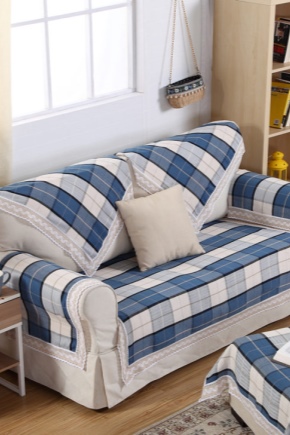
There is upholstered furniture in every home. In addition to its main purpose, the sofa creates a special atmosphere of home comfort. However, like any thing, it needs careful handling. Whatever one may say - one cannot do without a cape on the sofa. Today this accessory is a favorite theme in design, it is in great demand and has a number of advantages.
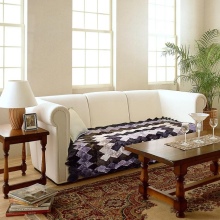
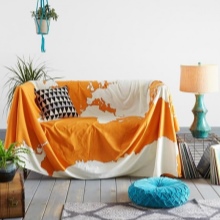
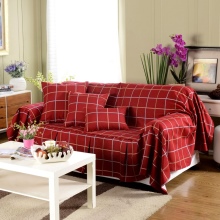
Features and Benefits
A sofa cover is a universal accessory for upholstered furniture. Today it is called a cover, bedspread, rug and has not one, but several purposes. This is not just a bright canvas of material of different textures, which is thrown onto the sofa, it is a part of the interior that is selected taking into account the style of the room and has a number of useful functions.
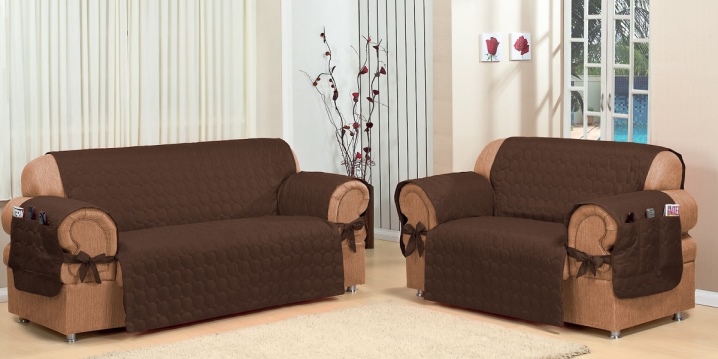
The main tasks of a sofa cape include:
- protection of furniture from dirt, dust and moisture, which appears even with the most careful and careful use (in this case, the cape is the second "skin" of the sofa);
- protection of the upholstery material from abrasion, fading and mechanical damage (preservation of the attractiveness of color, pattern, as well as preventing the appearance of scratches, holes, cuts, clues, cigarette burns, etc.);
- warming the seat and back to add comfort (the cape makes the seat surface warmer and softer, which is pleasant for the body and disposes to the most comfortable rest);
- creating an atmosphere of home comfort - with such an accessory, any sofa looks completely different, harmoniously fitting into any style of the room;
- decoration of a sofa, design of a backrest, armrests and a seat.

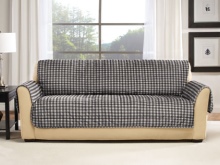
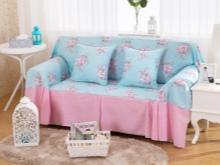
Whatever the cape on the sofa, it will definitely extend the life of upholstered furniture. In most cases, these bedspreads are highly breathable and therefore prevent the formation of mold or mildew.

Advantages
In addition to the tasks set, such accessories have a number of advantages:
- they are always beautiful and decorate any interior, bringing fresh colors into it;
- they can be bought in a specialty store, made to order, or sewn on your own at home;
- accessories are not limited in the choice of color, so it will not be difficult to match them to the interior;
- a rich selection of material textures allows you to buy different covers for the sofa, from simple summer options to soft, ivy and winter;
- such bedspreads differ in price, so that you can purchase them in accordance with the available budget;
- it can be decorated with different decor (braid, fringe, buttons, ruffles, frills, trim cords, embroidery, tassels);
- capes are made not only of solid material: thanks to the design and the chosen theme, they can be made in different techniques (for example, patchwork, appliqué, embroidery);
- in addition to woven materials, capes can be made of knitted fabric with a different openwork pattern;
- they are easy to clean (washable when dirty);
- save money on buying new furniture or repairing a cover;
- these accessories can cover one part of the sofa or completely cover the back, seat and sides;
- sofa covers are one-piece or composite, in the form of covers;
- depending on the model, they can be fixed by means of decorative elements (elastic bands, laces, ties, buttons, eyelets or buttons).
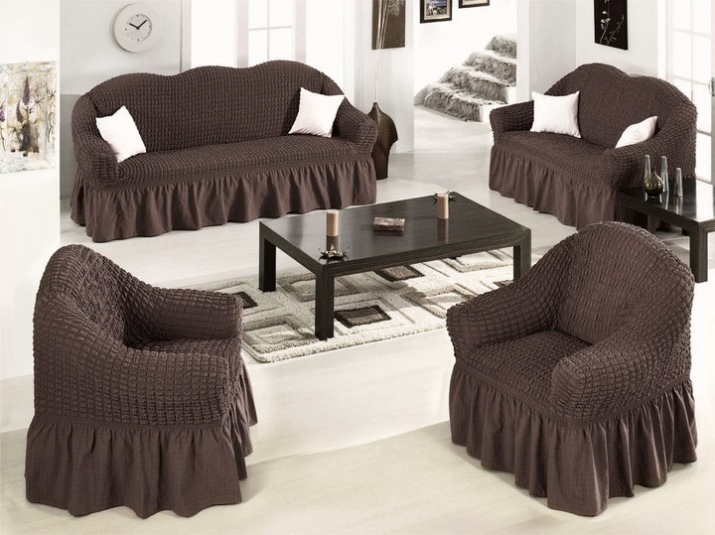
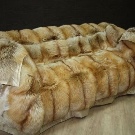
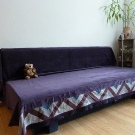
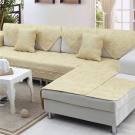

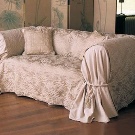
In addition, if you approach the interior composition creatively, in addition to covers for the sofa, you can make covers for soft pillows. This will create a cozy atmosphere, and the cape and pillows will become a single set.
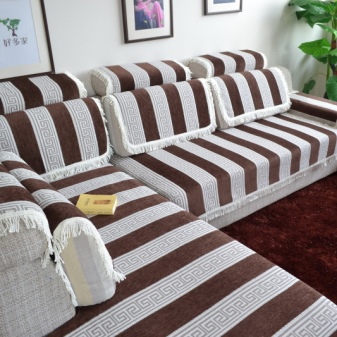
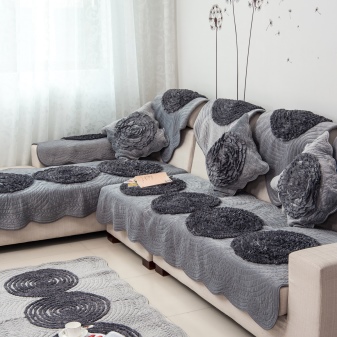
Views
Thanks to different design techniques, there are many options for capes. In addition to the usual canvases in the form of a bedspread, there are other types of sofa accessories (plaid, sofa decks, covers with an elastic band). Let's consider them.
Ordinary canvases are more often rectangular bedspreads, sometimes rounded at the corners (for convenience of edging). Such capes are considered classic (universal). They can cover the seat or backrest separately, and with a large size, both at the same time. Sometimes such a cloth is thrown over the entire sofa, closing its upper part together with the armrests and forming folds for the convenience of sitting. For greater comfort and prolonged durability, the bedspread can have a lining and padding polyester inside.
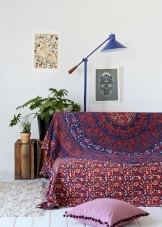
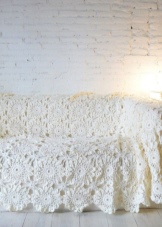

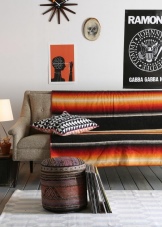
Bright representatives of this type are patchwork capescreated from many different colored patches. Most often they are performed in a certain geometric theme, although skillful needlewomen often create real masterpieces in the form of patchwork paintings.
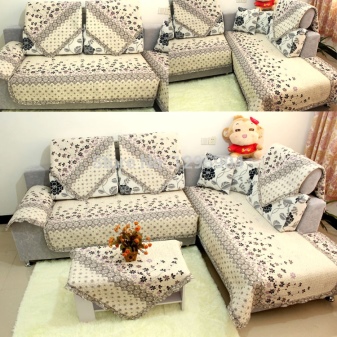
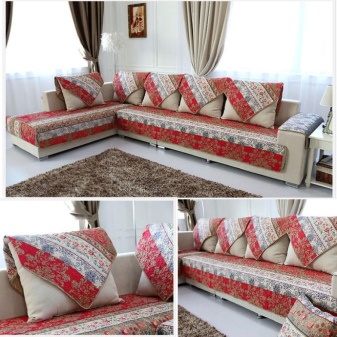
Plaids are another type of cushion cover. They are versatile and, in addition to their basic function, can be used as a lightweight blanket. Their shape is rectangular. Unlike textile capes, they do not have a curly edge and trim: the emphasis is on the texture of the material.
Blankets are divided into fur and carpet. The latter are rare today, as they have lost their popularity. But fur blankets are in great demand and are considered a manifestation of luxury and aristocracy.
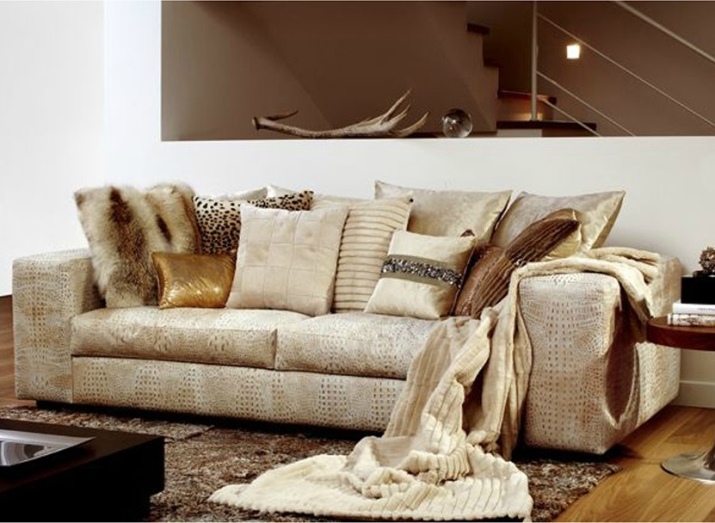
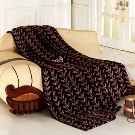
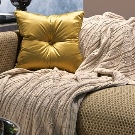

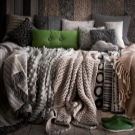
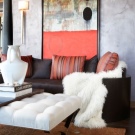
In addition to rectangular capes, manufacturers produce models in the form of divandecks, covers of two or four canvases interconnected.

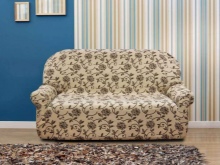
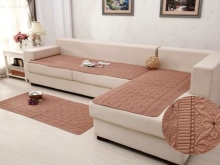
An interesting option for a cape are sofa accessories with an elastic band along the edge of the cover. This creates the possibility of perfect fixation on the surface, without folds and creases.

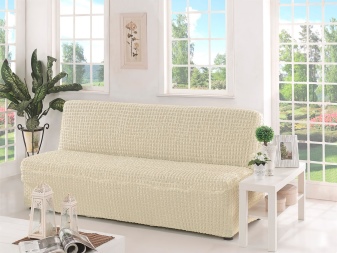
There are many varieties of capes, they all differ depending on the model of the sofa and can be designed for a straight or corner sofa, as well as for armrests, which are also subject to mechanical stress during the operation of upholstered furniture. Covers for corner sofas are distinguished by the fact that, without fixation, they constantly slide off and thereby make the overall look sloppy.
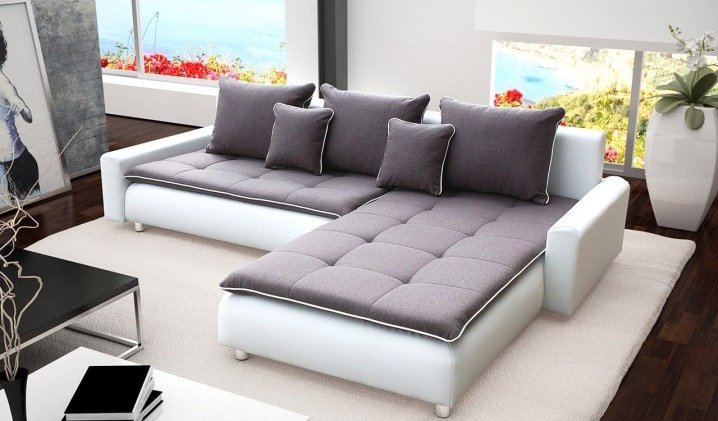
Accessories can have an additional effect and be, for example, massage, waterproof or warming. You can buy them or make them yourself - sew or knit. In any case, they look stylish and original.
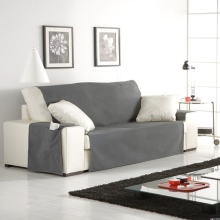


Fabrics
Modern sofa covers are made from a wide variety of materials. The production uses natural and artificial textiles with high strength and resistance to deformation, as well as fading of the original color. Such accessories can be made from tapestry, Korean velor "chinchilla", flock, leatherette. However, such textiles are not the only ones, so the choice of capes is endless.
All material options can be divided into:
- textile;
- fur;
- terry;
- knitted

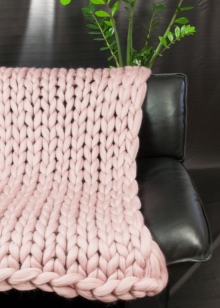
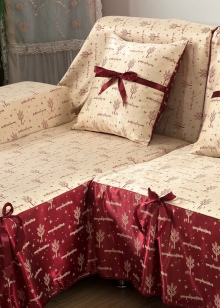
Each of them has its own characteristics.
Fur blanket
A blanket made of fur is a luxurious refined accessory that transforms any upholstered furniture, gives it a premium look, adds volume and gets dirty more slowly than other counterparts. The only drawback of such a blanket is difficult maintenance (it cannot be washed, so you will have to dry clean it). But it can create the feeling of a soft blanket, because the fur is always warm and cozy.
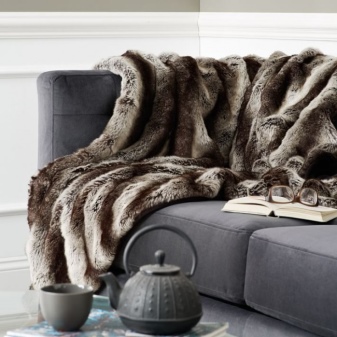
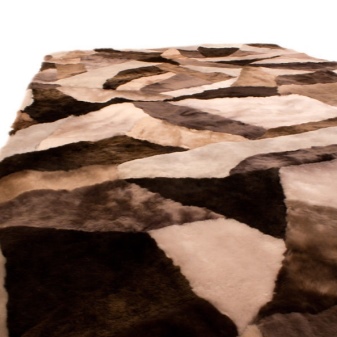
Terry bedspread
Such a cape is often made of natural material, therefore it allows air to pass through well, does not cause an allergic skin reaction and is suitable for all family members, and especially for children. The bedspread can have different processing of fibers, in terms of softness it is not inferior to the analogue of fur, although not as durable. Often it is heavy (if the size of the canvas is large).
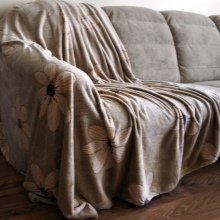
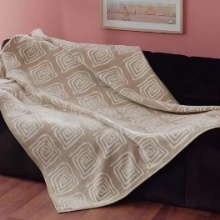
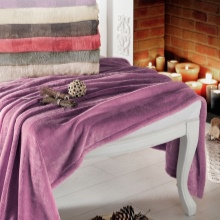
Furniture tapestry blanket
These types of capes are considered the most durable and practical. They are wear-resistant, differ in a variety of textures (from ordinary weaving to inserts of finishing fibers), allow you to change the design of the sofa without leaving the theme of upholstery. Tapestry capes are easy to clean from dirt, dust, food debris, and their color remains bright for a long time.
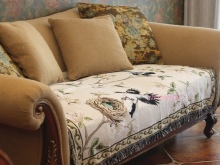
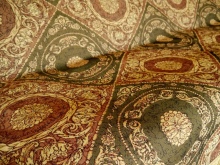
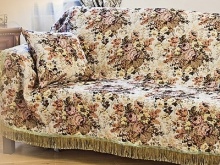
Textile capes
Silk, satin and satin accessories are some of the most elegant. They are lightweight even with large dimensions, are easy to maintain and have a relatively low cost. The disadvantage of textile options is quick wear. Such models wear out faster than others, lose their original color brightness, in addition, they do not protect the surface of the sofa from moisture, tear faster, wrinkle and form clues. These capes need careful maintenance.
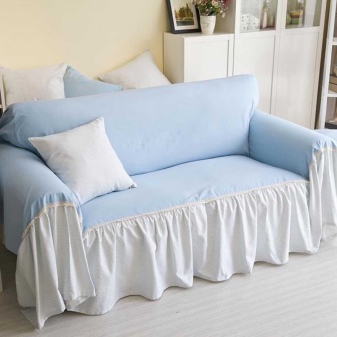
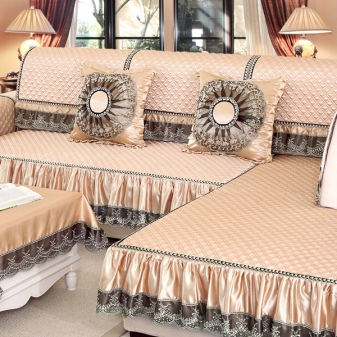
How to choose?
When choosing covers for a sofa, you must take into account the material of the product. In order for it to harmoniously fit into the existing interior, it is worth starting from the type of room (bedroom, kitchen, living room), choosing a color and shade taking into account the tone of the walls and furniture upholstery.
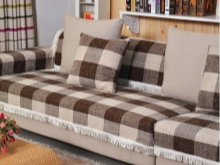
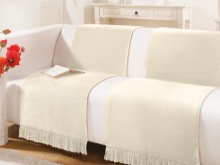
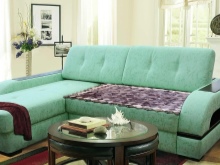
Before choosing a cape for a sofa, it is worth measuring the dimensions of the upholstered furniture. It is inappropriate to purchase a case that is too small or too large, since it will not look beautiful in either case. In addition, it is important to take into account the model of the sofa: the covers on the straight line, the euro-sofa and the corner version are completely different in cut. It is important to provide for the type of bedspread: a canvas without taking into account the armrests or the opposite option. If the model of furniture will be with shelves, it is worth starting from its features.
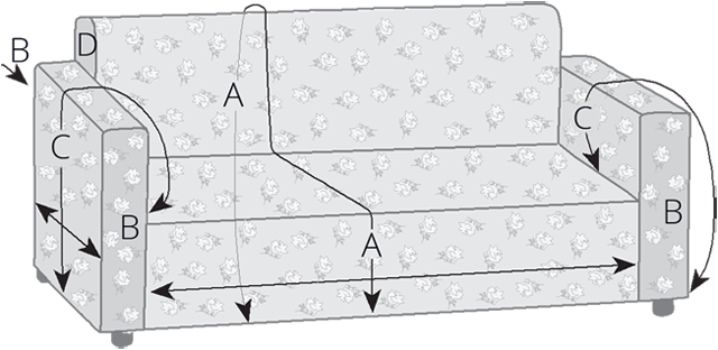
If the furniture is made up of modular units, a separate slipcover to fit on each unit is ideal. This will add brightness to the sofa, refresh the style of the interior and extend the life of the furniture. Such capes are especially relevant for a white and light sofa.
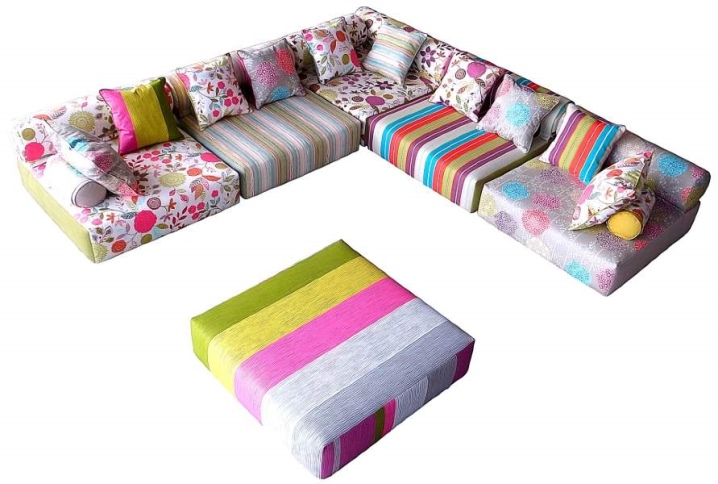
Interior ideas
Capes are an accessory that can change the style of an interior. For example, a light gray sofa can be decorated with beige capes. To keep the design from being too simple, the seat covers are decorated with trim tape on the front side edge and along the edge of the cover. For the back, a cape is made in the form of independent small square-shaped canvases, along the edge of which the trim with braid is repeated. If desired, the interior can be supplemented with covers for soft pillows.
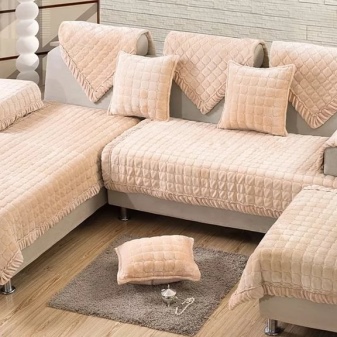

If the customer's mood is changeable, you can buy or make your own double-sided sofa covers. In order for them to fit well into the interior, it is advisable to select colored products with a play of contrasts: for example, multi-colored peas and contrasting upholstery. Such capes can be used to decorate a corner sofa of a laconic style, covering most of its area.
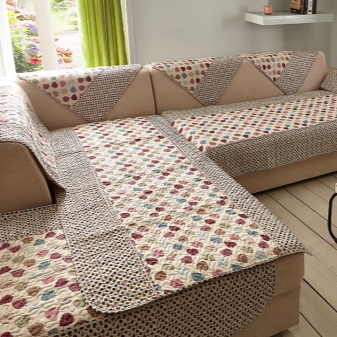

An excellent model that will protect the sofa even from the fur of pets can be quite laconic and at the same time interesting. The quilted texture of the material will add a discreet accent to the cape. The canvas is rectangular with added squares on the sides for the armrests - and a minimalist cover will change any, even the simplest sofa.

So that the product does not merge with the tone of the sofa and fit into the interior of the room, it is better to choose it in a color different from the tone of the furniture (but not flashy, but muted).
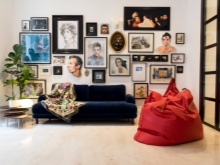
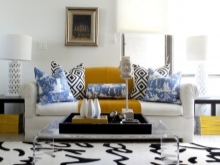
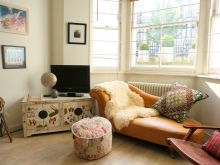
How to sew?
Sewing sofa capes is a fun and creative activity. It allows you to show your imagination and make a whole set of accessories, performing decorations for the chairs and the floor in the same style as the cape. It is not difficult to make an exclusive cape with your own hands: this will require material, sewing accessories, decorative elements and knowledge of the techniques of experienced craftsmen. In some cases, you may not be able to do without a pattern.
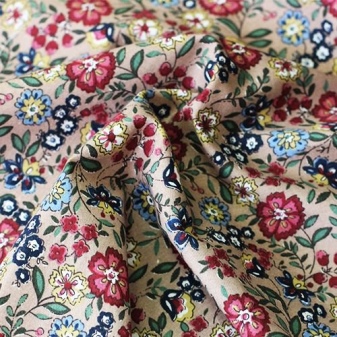
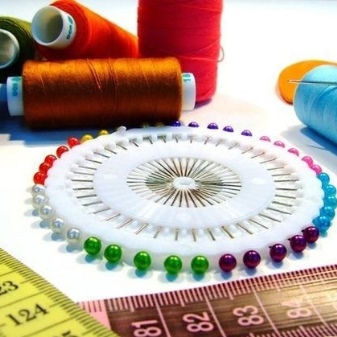
Any, even the simplest, sewing method will require measurements of the sofa. Measurements are taken from the seat, back, armrests. Then the cape is cut out, not forgetting to add seam allowances.
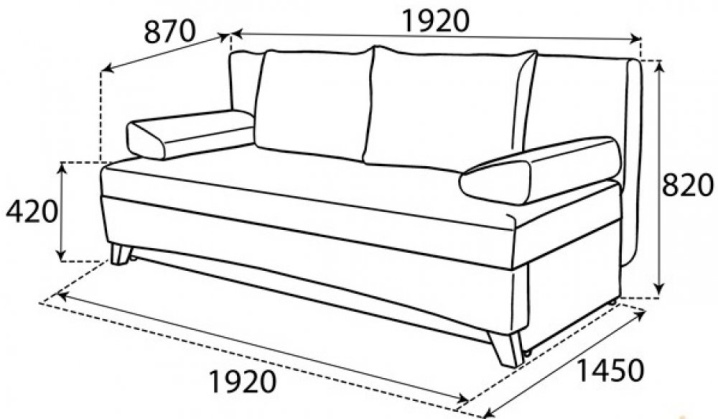
If the model provides for different decorative elements from the base fabric, the material is taken with a margin. If you want to make not a simple canvas, but a cover, it is worth complementing the cape with the side edge of the front part.

When making an accessory made of textiles, the fabric must be decated before cutting. The material is ironed with steam so that the fabric, if it has shrinkage, shrinks immediately. This will help eliminate deformation of the product in the future.
When cutting and sewing, safety pins are used for greater accuracy. Seam allowances should not be too small or too large.
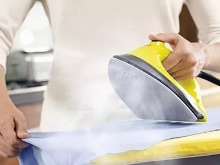
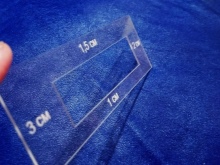

Having chosen square capes for each back block, they are cut out, a lining is added, folded with the front sides inward and grinded, leaving an unstitched area for turning out. Then the part is turned inside out, the edge is ironed, the finish is sewn on it (if provided by the model). To add strength, a finishing stitch can be added around the entire perimeter of the square.
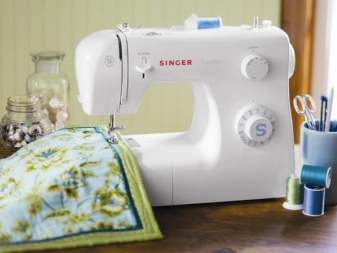
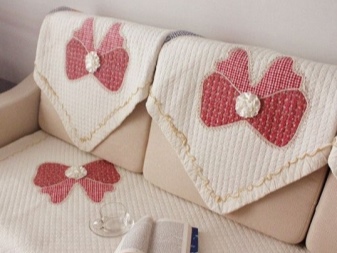
Roughly the same principle is used to make a seat cover. However, if the side edge of the front is conceived, first it is sharpened to the lower cut of the cape fabric, then the edges are processed. The armrests are made similarly to the back covers.
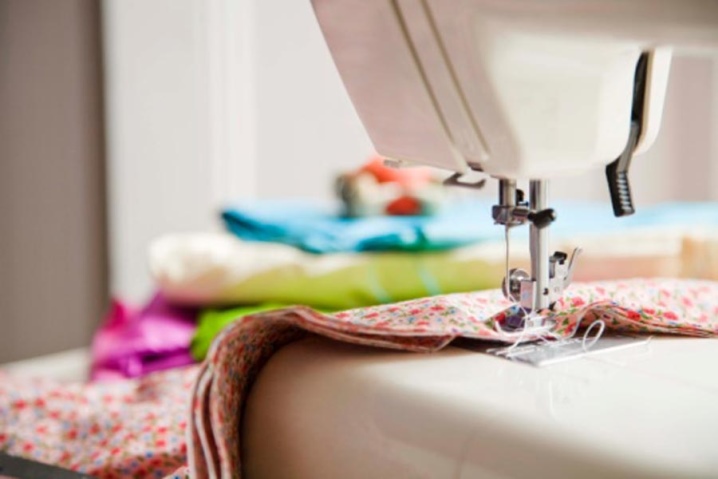
This model is the simplest and even a beginner can do. The only thing worth considering when making a cape with a lining is one small nuance: the base and the lining are cut out in the same size, and when they are sewn, the edge of the lining should protrude 2 mm beyond the cut of the main material. This is necessary so that there is no lining edge in the finished form on the base.

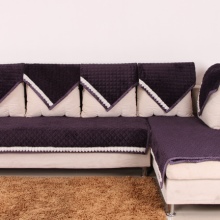
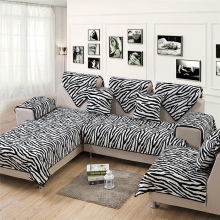
Simple cape
A universal option, which does not require much time to perform and carry out measurements, is performed as follows:
- measure the distance between the armrests, the width of the seat, the front edge of the sofa, the height of the back and the allowance for the stock (add about 20-30 cm to the width);
- separately measure the width and desired length of the armrest;
- textiles are edged with a finishing tape around the entire perimeter;
- do the same with two blanks for the sidewalls;
- the cape on the sofa and armrests are ironed out.
To make it more durable, it is worth adding a layer of padding polyester, covering it with a lining and stitching all three layers, beating their connection with imitation stitches. It remains to make the edging of the edge - and the stylish cover for the sofa is ready!

You can more clearly see the process of sewing a sofa cover in the next video.













The comment was sent successfully.